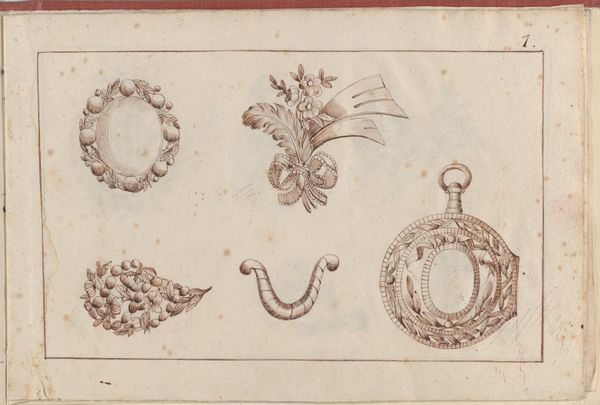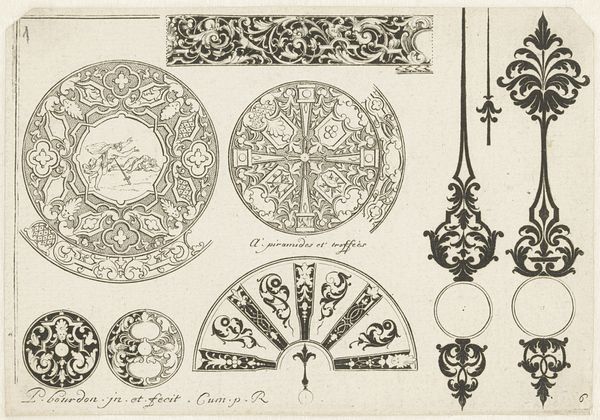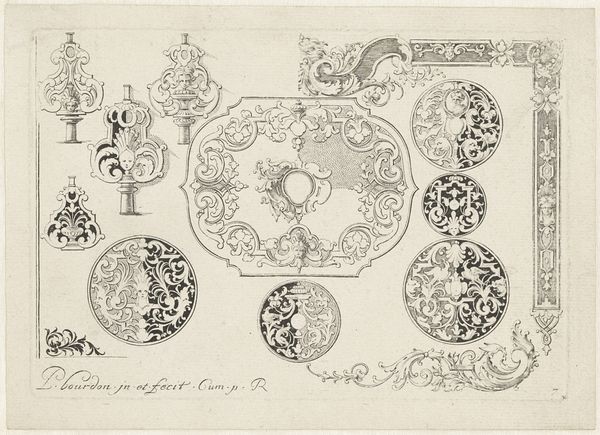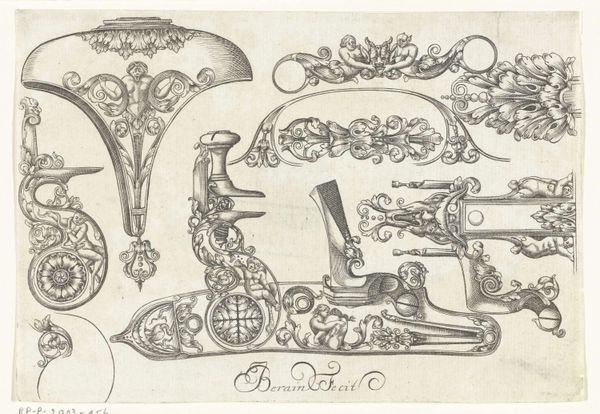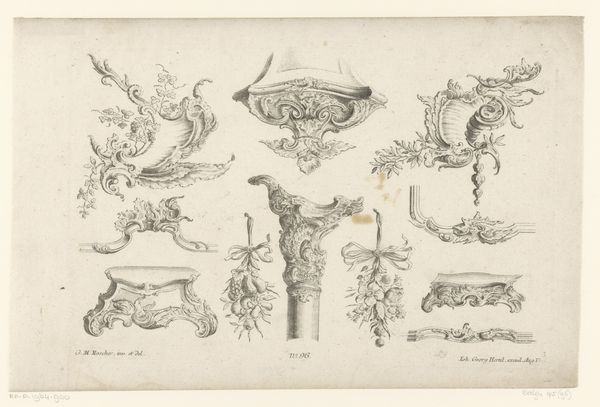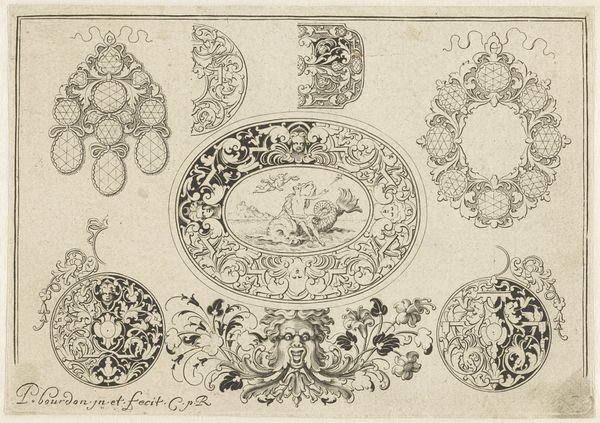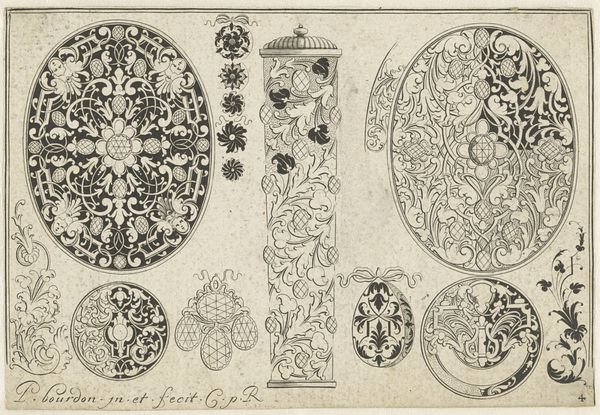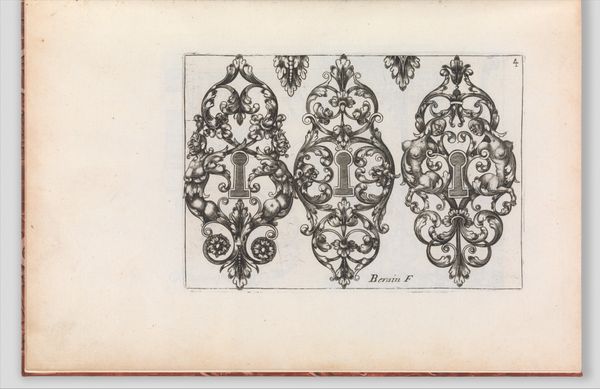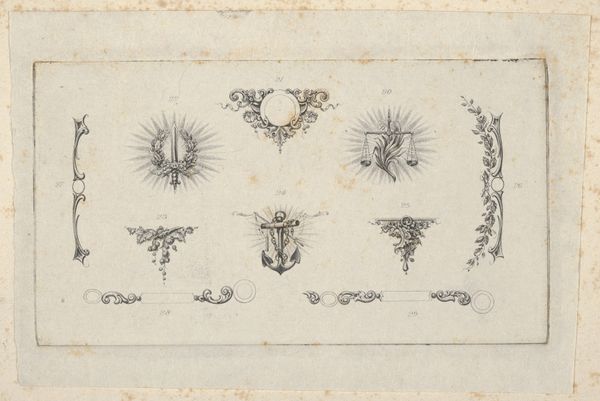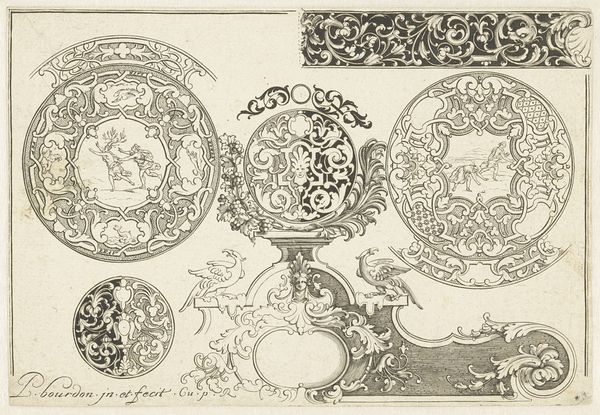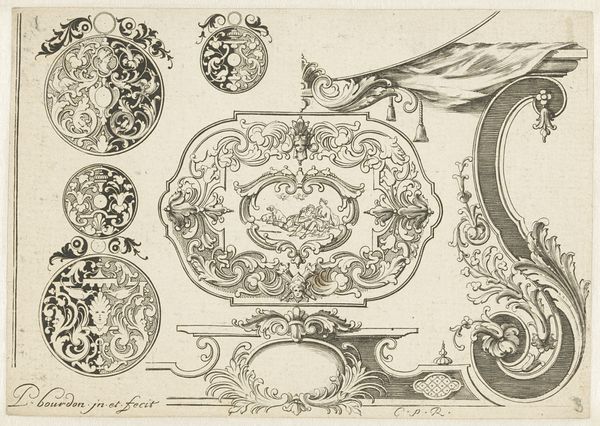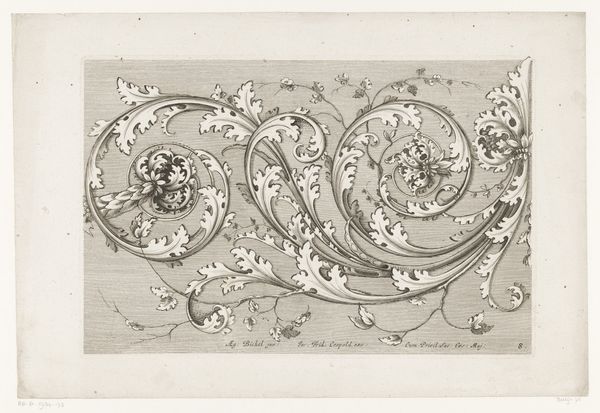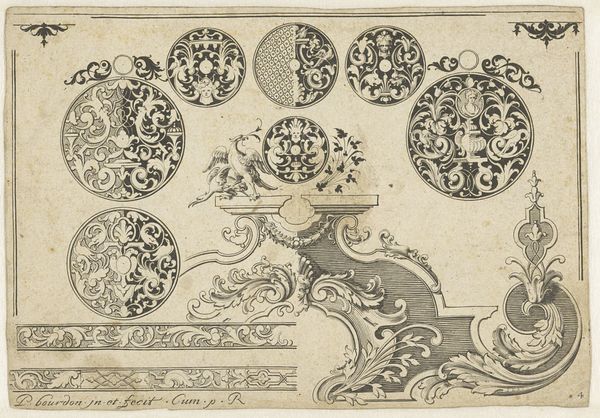
drawing, print, engraving
#
drawing
#
weapon
#
baroque
# print
#
decorative-art
#
engraving
Dimensions: height 188 mm, width 265 mm
Copyright: Rijks Museum: Open Domain
Curator: Welcome. Here at the Rijksmuseum we have an intriguing engraving from between 1690 and 1725 entitled "Kolfkappen en schroefplaten," meaning "Butt Caps and Screw Plates" in English, created by an anonymous artist. Editor: My initial impression is one of meticulous craftsmanship. The detail in the engraving is incredible. The designs almost seem to writhe with contained energy despite the static medium. Curator: It is indeed a stunning demonstration of baroque decorative art. Consider the socio-political climate. The rise of absolutist states demanded expressions of power, even on weapons. Decoration like this was often featured prominently to suggest refinement and control. Editor: And those baroque flourishes are structurally fascinating. The repetitive motifs, the curvilinear lines, the controlled symmetry offset by organic, leaf-like shapes create a fascinating tension. It is clear that an understanding of natural forms, combined with formal, man-made design informs every element. Curator: Absolutely. And engravings such as this wouldn’t necessarily represent reality as such, they acted more as models for gunsmiths to follow, and could thus be seen as participating in broader networks of artisanal knowledge and exchange, showcasing fashionable design accessible to gunsmiths across Europe. Editor: Looking at this print, it seems to depict individual components; they’re almost deconstructed from the fully-assembled firearm. They appear to float on the page, allowing close study of form and line. There’s an analytical, diagrammatic quality even to the aesthetic choices. Curator: Precisely. These decorative patterns served to enhance status in the period, reflecting gun ownership not only as power, but also refined taste. We can speculate that arms manufacturers responded directly to powerful consumers keen on flaunting symbolic regalia. Editor: Studying this today as we can in this museum gives us an unexpected lens, enabling our gaze to pause on elements whose intricate and expressive patterns were intended originally to amplify and glorify social privilege. Curator: Exactly, reflecting how museums can serve as critical arenas for historical investigation. Editor: Indeed. And for me, the formal tensions, symmetry against dynamism, order versus embellishment remain powerful today.
Comments
No comments
Be the first to comment and join the conversation on the ultimate creative platform.
